A hero ventures forth from the world of common day into a region of supernatural wonder:
fabulous forces are there encountered and a decisive victory is won:
the hero comes back from this mysterious adventure with the power to bestow boons on his fellow man.
Joseph Campbell, The Hero with a Thousand Faces (1949)
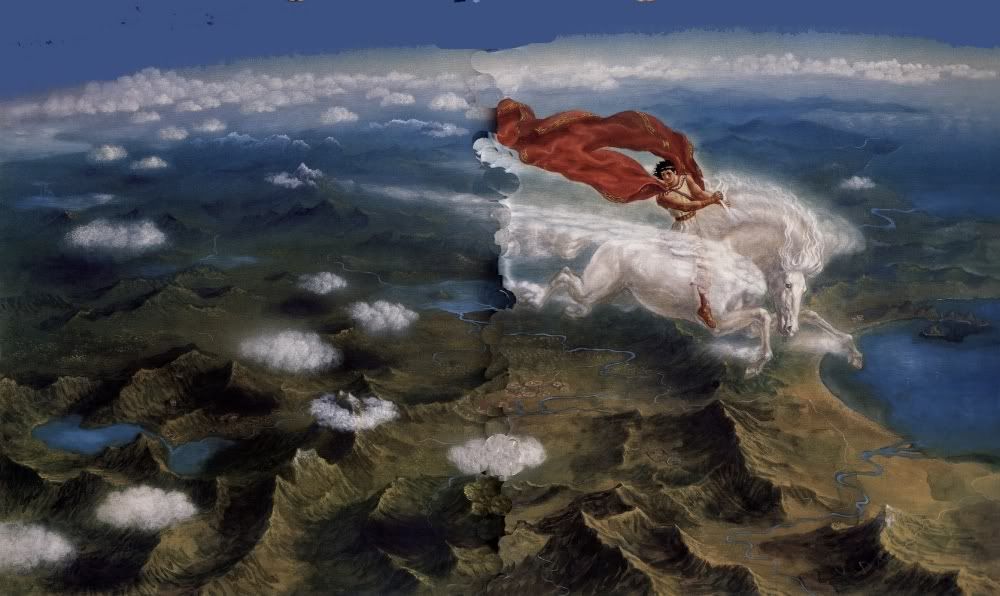
The term Monomyth (often referred to as the hero's journey) as used within the field of comparative mythology refers to a basic pattern supposedly found in many narratives from around the world. This widely-distributed pattern was described by Joseph Campbell in his book The Hero with a Thousand Faces (1949). An enthusiast of novelist James Joyce, Campbell borrowed the term monomyth from Joyce's Finnegans Wake.
In the monomyth, the hero begins in the ordinary world, and receives a call to enter an unknown world of strange powers and events. If the hero accepts the call to enter this strange world, the hero must face tasks and trials, either alone or with assistance. At its most intense, the hero must survive a severe challenge, often with help earned along the journey. If the hero survives, the hero may achieve a great gift or "boon." The hero must then decide whether to return to the ordinary world with this boon. If the hero does decide to return, the hero often faces challenges on the return journey. If the hero is successful in returning, the boon or gift may be used to improve the world. The stories of Osiris, Prometheus, Moses, Buddha, and Christ, for example, follow this structure very closely.
Campbell describes some seventeen stages or steps along this journey. Very few myths contain all seventeen stages — some myths contain many of the stages, while others contain only a few; some myths may have as a focus only one of the stages, while other myths may deal with the stages in a somewhat different order. These seventeen stages may be organized in a number of ways, including division into three sections: Departure (sometimes called Separation), Initiation, and Return. "Departure" deals with the hero's adventure prior to the quest; "Initiation" deals with the hero's many adventures along the way; and "Return" deals with the hero's return home with knowledge and powers acquired on the journey.
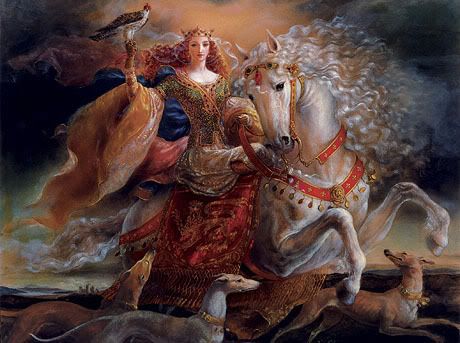
Departure (or Separation)
The Call to Adventure
The adventure begins with the hero receiving a call to action, such as a threat to the peace of the community, or the hero simply falls into or blunders into it. The call is often announced to the hero by another character who acts as a "herald". The herald, often represented as dark or terrifying and judged evil by the world, may call the character to adventure simply by the crisis of his appearance.
Campbell: The Call To Adventure – "A blunder – apparently the merest chance – reveals an unsuspected world, and the individual is drawn into a relationship with forces that are not rightly understood."
Classic examples: Sometimes the call to adventure happens of the character's own volition. In the story of the Minotaur, Theseus learns the tale of the beast and the terrible sacrifice to appease it, which sets him on a quest to destroy it. In Herman Hesse's book Siddhartha the titular character, becomes weary of his way of life and decides he must venture away from his accustomed life in order to attain spiritual enlightenment. Most Buddhist myths describe the Buddha as becoming bored with his royal life and venturing into the world. Other times, the hero is plunged into adventure by unforeseen events. In Homer's Odyssey, Odysseus is caught in the terrible winds of the angered god Poseidon and sent off to distant lands.
Refusal of the Call
In some stories, the hero initially refuses the call to adventure. When this happens, the hero may suffer somehow, and may eventually choose to answer, or may continue to decline the call.
Campbell: Refusal of the Call – "Refusal of the summons converts the adventure into its negative. Walled in boredom, hard work, or 'culture,' the subject loses the power of significant affirmative action and becomes a victim to be saved."
Classic examples: Mythology is rife with examples of what happens to those who refuse the call too long or do not take it seriously. A Persian city was turned to stone, inhabitants and all, for refusing the call of Allah[citation needed]. In Judeo-Christian mythology, Lot's wife is turned into a pillar of salt for looking back with longing to her old life when she had been summoned forth from her city by Yahweh and is thus prevented from being the "hero". One of the clearest references to the refusal and its consequences comes in the voice of Yahweh in Proverbs 1:24-27 and 32:
Because I have called, and ye refused ... I also will laugh at your calamity; I will mock when your fear cometh; when your fear cometh as desolation, and your destruction cometh as a whirlwind; when distress and anguish cometh upon you. ... For the turning away of the simple shall slay them, and the prosperity of fools shall destroy them.
Supernatural Aid
After the hero has accepted the call, he encounters a protective figure (often elderly) who provides special tools and advice for the adventure ahead, such as an amulet or a weapon.
Classic example: In Greek mythology, Ariadne gives Theseus a ball of string and a sword before he enters the labyrinth to confront the Minotaur.
The Crossing of the First Threshold
The hero must cross the threshold between the world he is familiar with and that which he is not. Often this involves facing a "threshold guardian", an entity that works to keep all within the protective confines of the world but must be encountered in order to enter the new zone of experience.
Belly of The Whale
The hero, rather than passing a threshold, passes into the new zone by means of rebirth. Appearing to have died by being swallowed or having their flesh scattered, the hero is transformed and becomes ready for the adventure ahead.
Classical Example: In the story of Dionysus, Hera sends hungry titans to devour the infant Dionysus. The titans tear apart the child and consume his flesh. However Dionysus's heart is saved by Hestia, goddess of the hearth, allowing Dionysus to be reborn as a god.
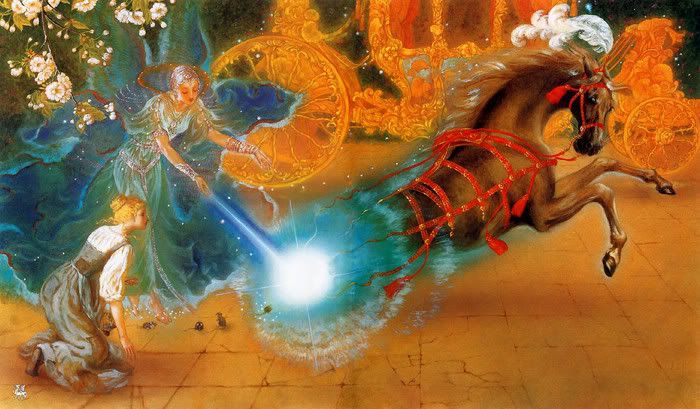
Initiation
The Road of Trials
Once past the threshold, the hero encounters a dream landscape of ambiguous and fluid forms. The hero is challenged to survive a succession of obstacles and, in so doing, amplifies his consciousness. The hero is helped covertly by the supernatural helper or may discover a benign power supporting him in his passage.
Mother as Goddess
The ultimate trial is often represented as a marriage between the hero and a queenlike, or mother-like figure. This represents the hero's mastery of life (represented by the feminine) as well as the totality of what can be known. When the hero is female, this becomes a male figure.
Woman as Temptress
His awareness expanded, the hero may fixate on the disunity between truth and his subjective outlook, inherently tainted by the flesh. This is often represented with revulsion or rejection of a female figure.
Atonement with the Father
The hero reconciles the tyrant and merciful aspects of the father-like authority figure to understand himself as well as this figure.
Apotheosis
The hero's ego is disintegrated in a breakthrough expansion of consciousness. Quite frequently the hero's idea of reality is changed; the hero may find an ability to do new things or to see a larger point of view, allowing the hero to sacrifice himself.
The Ultimate Boon
The hero is now ready to obtain that which he has set out, an item or new awareness that, once he returns, will benefit the society that he has left.
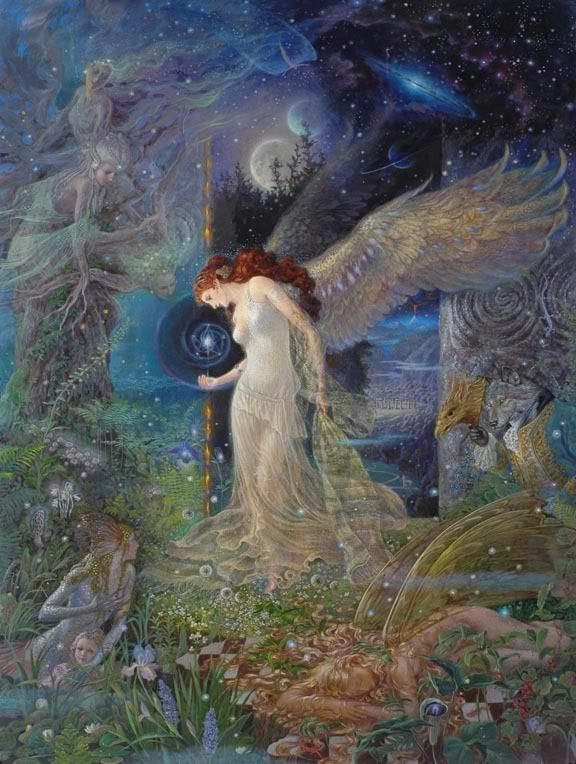
Return
Refusal of the Return
Having found bliss and enlightenment in the other world, the hero may not want to return to the ordinary world to bestow the boon onto her fellow human.
Classic examples: After obtaining Nirvana, Buddha doubted whether he could communicate the path to enlightenment (though some Buddhist traditions hold that this was only cunning politics by Buddha: by saying this he gave people the impression that he didn't want to teach them, which made them curious and eager to hear all about it).
The Magic Flight
When the boon's acquisition (or the hero's return to the world) comes against opposition, a chase or pursuit may ensue before the hero returns.
Rescue from Without
The hero may need to be rescued by forces from the ordinary world.
This may be because the hero has refused to return
or because he/she is successfully blocked from returning with the boon.
The hero loses his/her ego.
The Crossing of the Return Threshold
The hero returns to the world of common day and must accept it as real.
Master of Two Worlds
Because of the boon or due to his/her experience,
the hero may now perceive both the divine and human worlds.
Freedom to Live
The hero bestows the boon to her fellow human.

Campbell's proposed structure has been expanded and modified since its conception. Many modern characterizations of it add in new steps (such as the hero having a miraculous birth) or combine or prune others.
For instance, Phil Cousineau, in his book, The Hero's Journey, divides it up into the following eight steps:
The Call to Adventure
The Road of Trials
The Vision Quest
The Meeting with the Goddess
The Boon
The Magic Flight
The Return Threshold
The Master of Two Worlds
Another eight-step formulation was given by David Adams Leeming in his book, Mythology: The Voyage of the Hero:
Miraculous conception and birth
Initiation of the hero-child
Withdrawal from family or community for meditation and preparation
Trial and Quest
Death
Descent into the underworld
Resurrection and rebirth
Ascension, apotheosis, and atonement
(For linked version, see source: wikipedia)
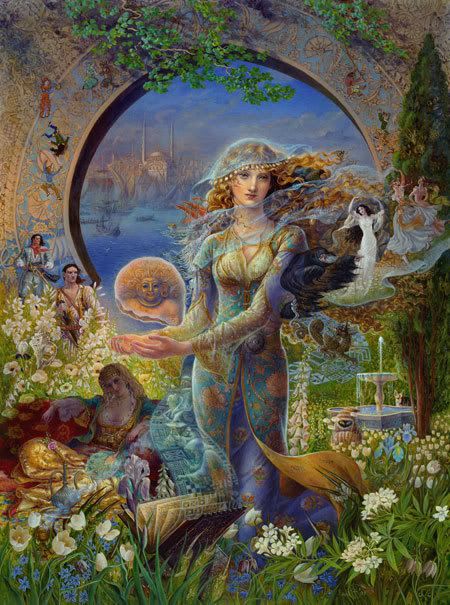
{Art by: Kinuko Y. Craft /Programming by DPC}
Are you the hero of your life story on Earth?
Using these models, where are you at in your hero's journey?
fabulous forces are there encountered and a decisive victory is won:
the hero comes back from this mysterious adventure with the power to bestow boons on his fellow man.
Joseph Campbell, The Hero with a Thousand Faces (1949)

The term Monomyth (often referred to as the hero's journey) as used within the field of comparative mythology refers to a basic pattern supposedly found in many narratives from around the world. This widely-distributed pattern was described by Joseph Campbell in his book The Hero with a Thousand Faces (1949). An enthusiast of novelist James Joyce, Campbell borrowed the term monomyth from Joyce's Finnegans Wake.
In the monomyth, the hero begins in the ordinary world, and receives a call to enter an unknown world of strange powers and events. If the hero accepts the call to enter this strange world, the hero must face tasks and trials, either alone or with assistance. At its most intense, the hero must survive a severe challenge, often with help earned along the journey. If the hero survives, the hero may achieve a great gift or "boon." The hero must then decide whether to return to the ordinary world with this boon. If the hero does decide to return, the hero often faces challenges on the return journey. If the hero is successful in returning, the boon or gift may be used to improve the world. The stories of Osiris, Prometheus, Moses, Buddha, and Christ, for example, follow this structure very closely.
Campbell describes some seventeen stages or steps along this journey. Very few myths contain all seventeen stages — some myths contain many of the stages, while others contain only a few; some myths may have as a focus only one of the stages, while other myths may deal with the stages in a somewhat different order. These seventeen stages may be organized in a number of ways, including division into three sections: Departure (sometimes called Separation), Initiation, and Return. "Departure" deals with the hero's adventure prior to the quest; "Initiation" deals with the hero's many adventures along the way; and "Return" deals with the hero's return home with knowledge and powers acquired on the journey.

Departure (or Separation)
The Call to Adventure
The adventure begins with the hero receiving a call to action, such as a threat to the peace of the community, or the hero simply falls into or blunders into it. The call is often announced to the hero by another character who acts as a "herald". The herald, often represented as dark or terrifying and judged evil by the world, may call the character to adventure simply by the crisis of his appearance.
Campbell: The Call To Adventure – "A blunder – apparently the merest chance – reveals an unsuspected world, and the individual is drawn into a relationship with forces that are not rightly understood."
Classic examples: Sometimes the call to adventure happens of the character's own volition. In the story of the Minotaur, Theseus learns the tale of the beast and the terrible sacrifice to appease it, which sets him on a quest to destroy it. In Herman Hesse's book Siddhartha the titular character, becomes weary of his way of life and decides he must venture away from his accustomed life in order to attain spiritual enlightenment. Most Buddhist myths describe the Buddha as becoming bored with his royal life and venturing into the world. Other times, the hero is plunged into adventure by unforeseen events. In Homer's Odyssey, Odysseus is caught in the terrible winds of the angered god Poseidon and sent off to distant lands.
Refusal of the Call
In some stories, the hero initially refuses the call to adventure. When this happens, the hero may suffer somehow, and may eventually choose to answer, or may continue to decline the call.
Campbell: Refusal of the Call – "Refusal of the summons converts the adventure into its negative. Walled in boredom, hard work, or 'culture,' the subject loses the power of significant affirmative action and becomes a victim to be saved."
Classic examples: Mythology is rife with examples of what happens to those who refuse the call too long or do not take it seriously. A Persian city was turned to stone, inhabitants and all, for refusing the call of Allah[citation needed]. In Judeo-Christian mythology, Lot's wife is turned into a pillar of salt for looking back with longing to her old life when she had been summoned forth from her city by Yahweh and is thus prevented from being the "hero". One of the clearest references to the refusal and its consequences comes in the voice of Yahweh in Proverbs 1:24-27 and 32:
Because I have called, and ye refused ... I also will laugh at your calamity; I will mock when your fear cometh; when your fear cometh as desolation, and your destruction cometh as a whirlwind; when distress and anguish cometh upon you. ... For the turning away of the simple shall slay them, and the prosperity of fools shall destroy them.
Supernatural Aid
After the hero has accepted the call, he encounters a protective figure (often elderly) who provides special tools and advice for the adventure ahead, such as an amulet or a weapon.
Classic example: In Greek mythology, Ariadne gives Theseus a ball of string and a sword before he enters the labyrinth to confront the Minotaur.
The Crossing of the First Threshold
The hero must cross the threshold between the world he is familiar with and that which he is not. Often this involves facing a "threshold guardian", an entity that works to keep all within the protective confines of the world but must be encountered in order to enter the new zone of experience.
Belly of The Whale
The hero, rather than passing a threshold, passes into the new zone by means of rebirth. Appearing to have died by being swallowed or having their flesh scattered, the hero is transformed and becomes ready for the adventure ahead.
Classical Example: In the story of Dionysus, Hera sends hungry titans to devour the infant Dionysus. The titans tear apart the child and consume his flesh. However Dionysus's heart is saved by Hestia, goddess of the hearth, allowing Dionysus to be reborn as a god.

Initiation
The Road of Trials
Once past the threshold, the hero encounters a dream landscape of ambiguous and fluid forms. The hero is challenged to survive a succession of obstacles and, in so doing, amplifies his consciousness. The hero is helped covertly by the supernatural helper or may discover a benign power supporting him in his passage.
Mother as Goddess
The ultimate trial is often represented as a marriage between the hero and a queenlike, or mother-like figure. This represents the hero's mastery of life (represented by the feminine) as well as the totality of what can be known. When the hero is female, this becomes a male figure.
Woman as Temptress
His awareness expanded, the hero may fixate on the disunity between truth and his subjective outlook, inherently tainted by the flesh. This is often represented with revulsion or rejection of a female figure.
Atonement with the Father
The hero reconciles the tyrant and merciful aspects of the father-like authority figure to understand himself as well as this figure.
Apotheosis
The hero's ego is disintegrated in a breakthrough expansion of consciousness. Quite frequently the hero's idea of reality is changed; the hero may find an ability to do new things or to see a larger point of view, allowing the hero to sacrifice himself.
The Ultimate Boon
The hero is now ready to obtain that which he has set out, an item or new awareness that, once he returns, will benefit the society that he has left.

Return
Refusal of the Return
Having found bliss and enlightenment in the other world, the hero may not want to return to the ordinary world to bestow the boon onto her fellow human.
Classic examples: After obtaining Nirvana, Buddha doubted whether he could communicate the path to enlightenment (though some Buddhist traditions hold that this was only cunning politics by Buddha: by saying this he gave people the impression that he didn't want to teach them, which made them curious and eager to hear all about it).
The Magic Flight
When the boon's acquisition (or the hero's return to the world) comes against opposition, a chase or pursuit may ensue before the hero returns.
Rescue from Without
The hero may need to be rescued by forces from the ordinary world.
This may be because the hero has refused to return
or because he/she is successfully blocked from returning with the boon.
The hero loses his/her ego.
The Crossing of the Return Threshold
The hero returns to the world of common day and must accept it as real.
Master of Two Worlds
Because of the boon or due to his/her experience,
the hero may now perceive both the divine and human worlds.
Freedom to Live
The hero bestows the boon to her fellow human.

Campbell's proposed structure has been expanded and modified since its conception. Many modern characterizations of it add in new steps (such as the hero having a miraculous birth) or combine or prune others.
For instance, Phil Cousineau, in his book, The Hero's Journey, divides it up into the following eight steps:
The Call to Adventure
The Road of Trials
The Vision Quest
The Meeting with the Goddess
The Boon
The Magic Flight
The Return Threshold
The Master of Two Worlds
Another eight-step formulation was given by David Adams Leeming in his book, Mythology: The Voyage of the Hero:
Miraculous conception and birth
Initiation of the hero-child
Withdrawal from family or community for meditation and preparation
Trial and Quest
Death
Descent into the underworld
Resurrection and rebirth
Ascension, apotheosis, and atonement
(For linked version, see source: wikipedia)

{Art by: Kinuko Y. Craft /Programming by DPC}
Are you the hero of your life story on Earth?
Using these models, where are you at in your hero's journey?

